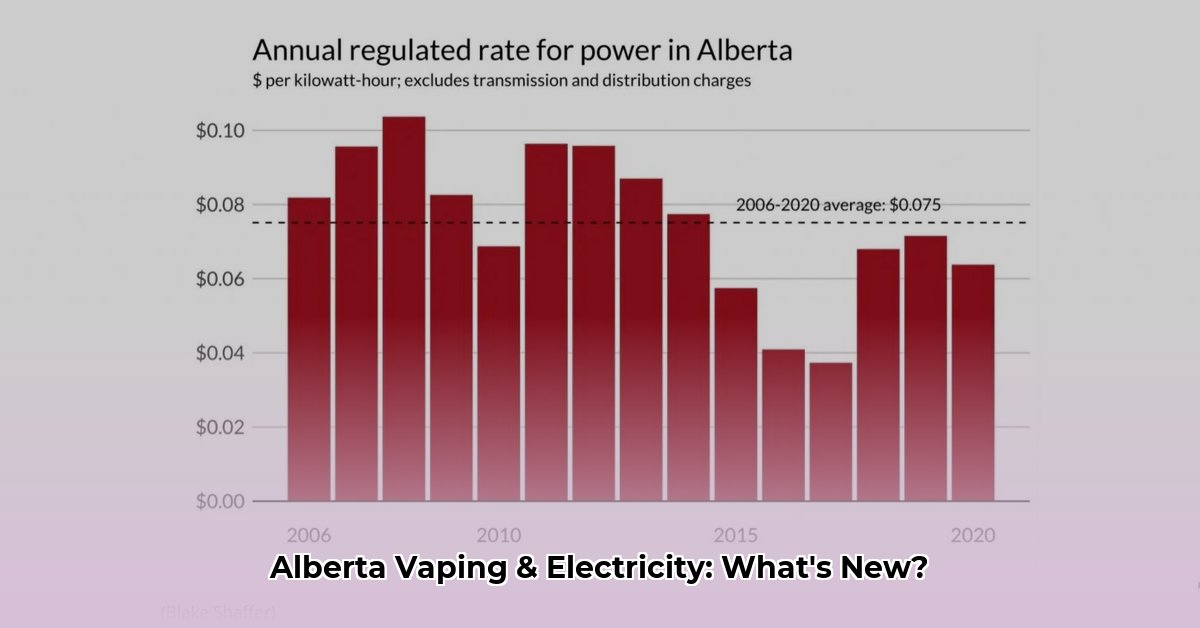This guide explains Alberta’s vaping tax, effective January 1, 2025. It clarifies the tax calculation, addresses common questions, and separates it from unrelated electricity rate changes.
How the Vaping Tax Works
Alberta’s vaping tax is tiered, meaning the rate changes based on the volume of vape juice:
- Tier 1 (First 10 mL): $1.12 per 2 mL.
- Tier 2 (Over 10 mL): $1.12 per 10 mL.
Here’s how to calculate the tax:
- Calculate Tier 1 Tax (if applicable): If your vape juice is 10 mL or more, the first 10 mL is taxed at $1.12 per 2 mL. (10 mL / 2 mL) * $1.12 = $5.60
- Calculate Tier 2 Tax (if applicable): Any amount over 10 mL is taxed at $1.12 per 10 mL. For example, a 30 mL bottle has 20 mL subject to Tier 2. (20 mL / 10 mL) * $1.12 = $2.24
- Add Tier 1 and Tier 2 Taxes: Using the 30 mL example, the total tax is $5.60 + $2.24 = $7.84
Here’s a quick reference table:
| Vape Juice Volume (mL) | Tax Calculation | Total Tax ($) |
|---|---|---|
| 10 | (10/2) * $1.12 | $5.60 |
| 30 | (10/2) * $1.12 + (20/10) * $1.12 | $7.84 |
| 60 | (10/2) * $1.12 + (50/10) * $1.12 | $11.20 |
| 100 | (10/2) * $1.12 + (90/10) * $1.12 | $15.68 |
Frequently Asked Questions
When did the tax start?
January 1, 2025.
Does the tax apply to all vape products?
It likely applies to all vaping products containing e-liquid sold in Alberta. However, further clarification from the government may be needed regarding devices and accessories.
How does this tax differ from federal taxes?
This provincial tax is in addition to the existing federal vaping excise duty.
Where can I find more information?
- Alberta Finance (for tax information)
- Health Canada (for vaping health risks)
Why the Vaping Tax?
The Alberta government’s stated goals are to discourage vaping, particularly among youth, and generate revenue. The long-term effects, such as potential impacts on the black market or cross-border purchasing, remain uncertain. Some experts believe increased prices may drive consumers to unregulated sources.
What’s Next?
A potential federal ban on flavored vaping products is under discussion. This could significantly alter the vaping landscape in Alberta.
Potential Health Effects of Vaping
Vaping, while potentially less harmful than smoking, is not risk-free. Research suggests links to lung and cardiovascular problems, and nicotine addiction—a particular concern for adolescents. Health Canada provides comprehensive information on vaping’s health effects.
Ongoing Research Areas
- Lung Damage: Studies are investigating links between vaping and respiratory illnesses like bronchiolitis obliterans, and examining its long-term impact on lung function.
- Cardiovascular Problems: Research is exploring the relationship between vaping and heart disease, stroke, and other cardiovascular conditions, focusing on how vaping affects blood pressure, heart rate, and blood vessel function.
- Nicotine Addiction: Studies are investigating vaping’s role in nicotine dependence, particularly among adolescents, and exploring effective cessation strategies.
Date last updated: October 27, 2023







